Affiliate links on Android Authority may earn us a commission. Learn more.
OnePlus 2 vs OnePlus One - the battle of the "flagship killers"
Published onJuly 27, 2015
The OnePlus 2 has finally been announced and is set to compete against all the major flagships out there from the likes of Samsung, LG, HTC, Sony, and others. But how does the new “flagship killer” fare against its very own predecessor? While we’ll likely be bringing you a more detailed look later, let’s jump in and pit these two OnePlus devices against one another in this short comparison.
Design
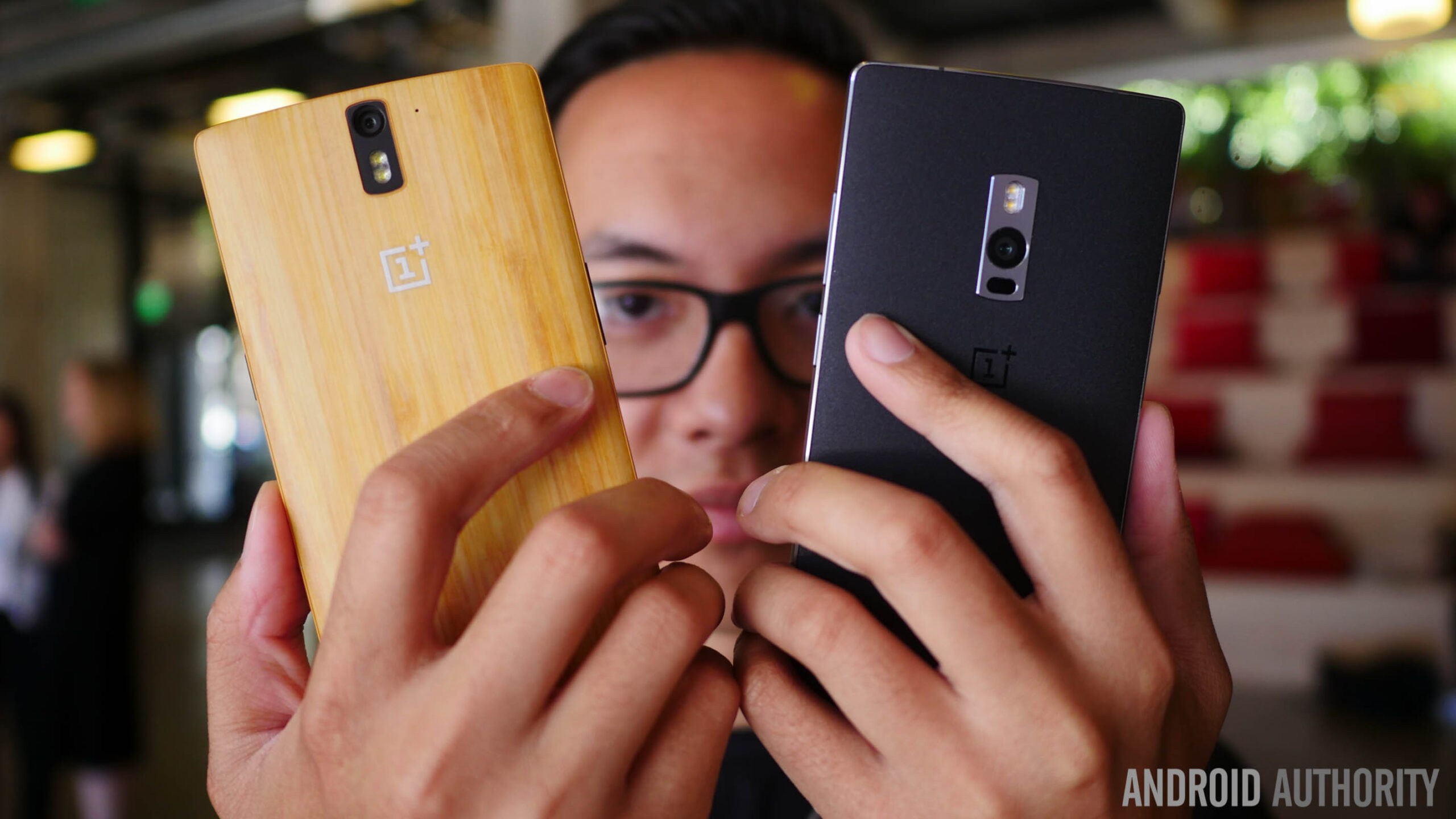
Both OnePlus devices share very similar design characteristics, but the Chinese startup has managed to differentiate them in a few key ways. The first change you will notice is the addition of a home button right below the screen on the OnePlus 2. This may take away from that sleek, simple look the OnePlus One has been known for, but one can also argue the phone maker was forced to do this, as that is where the fingerprint reader is located. The camera on the back is also placed a bit lower, while the flash has been relocated above the lens.
Looking around the new flagship, you’ll notice the rest of the button layout has been changed up a bit. The 3.5mm headphone jack still sits on the top, and the volume rocker sits on the right side, this time joined by the power/standby key. This is to make room for the new Alert Slider on the left side of the handset, giving users the ability to quickly mute and un-mute the device with the flip of a switch.
Moving to the bottom of the device, you’ll find a USB Type-C port flanked by two speaker grills. We’re extremely happy OEMs are finally beginning to make phones with this new type of port, as it opens up a whole new set of capabilities for the handset, including support for universal accessories, a reversible connector and more.
Display
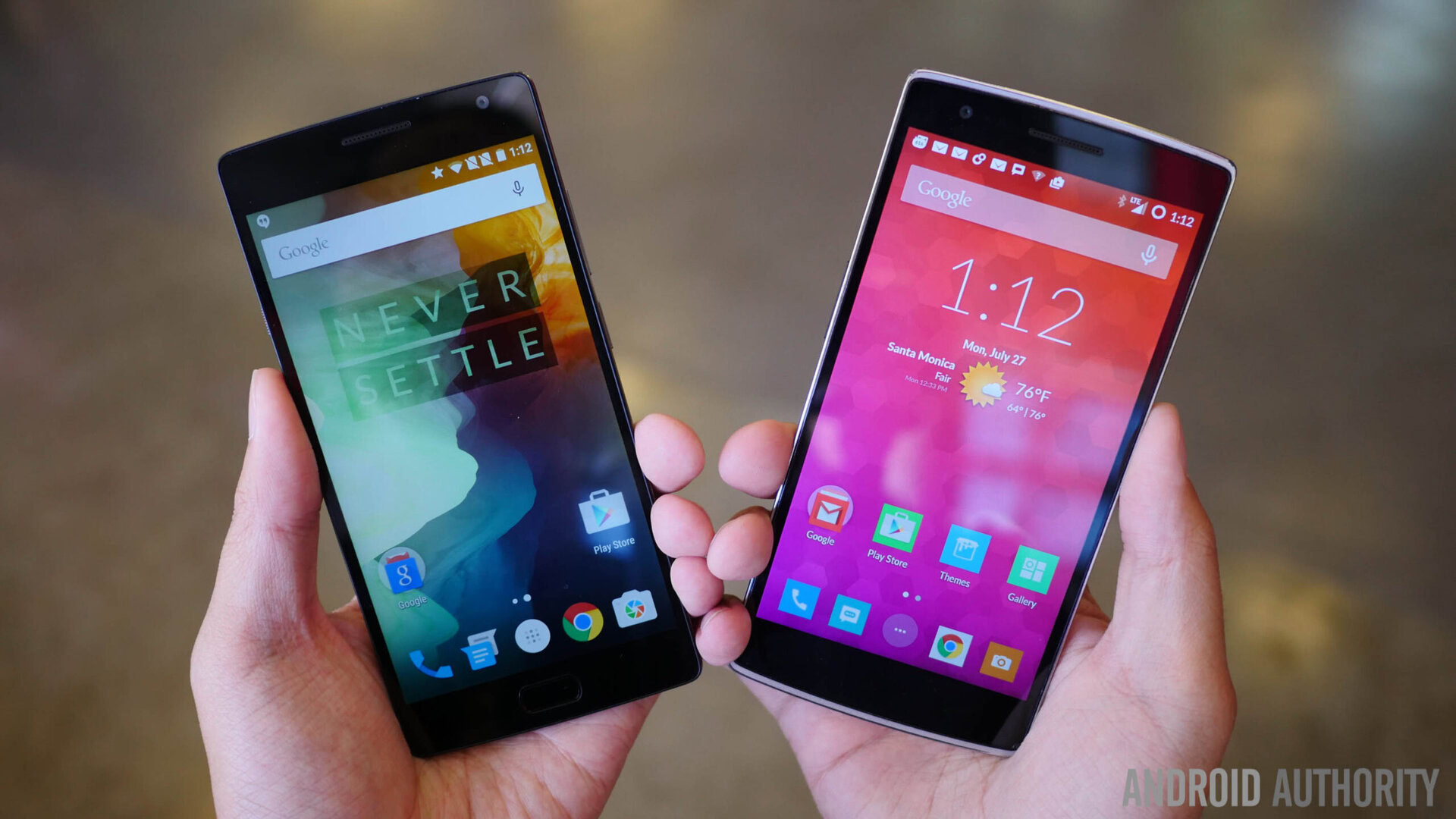
When it comes to the display, OnePlus chose to go with essentially the same panel this time around. Measuring 5.5 inches and bringing the same 1920 x 1080 resolution to the table, the new flagship’s display looks very similar to that of the OnePlus One. While it’s a little odd that the company didn’t choose to go with a much higher-end Quad HD display, one benefit to keeping the resolution down is battery life. It takes a lot of battery to power a higher resolution display, so we’re sure some users out there will be fine with this trade-off.
Hardware
Even though the OnePlus 2’s display didn’t receive much of an upgrade this time around, the new flagship’s internals did receive a significant improvement. The OnePlus 2 comes with a Snapdragon 810 v2.1 processor, Adreno 430 GPU and 3/4GB of LPDDR4 RAM, which should be more than enough to perform everyday tasks for most users.
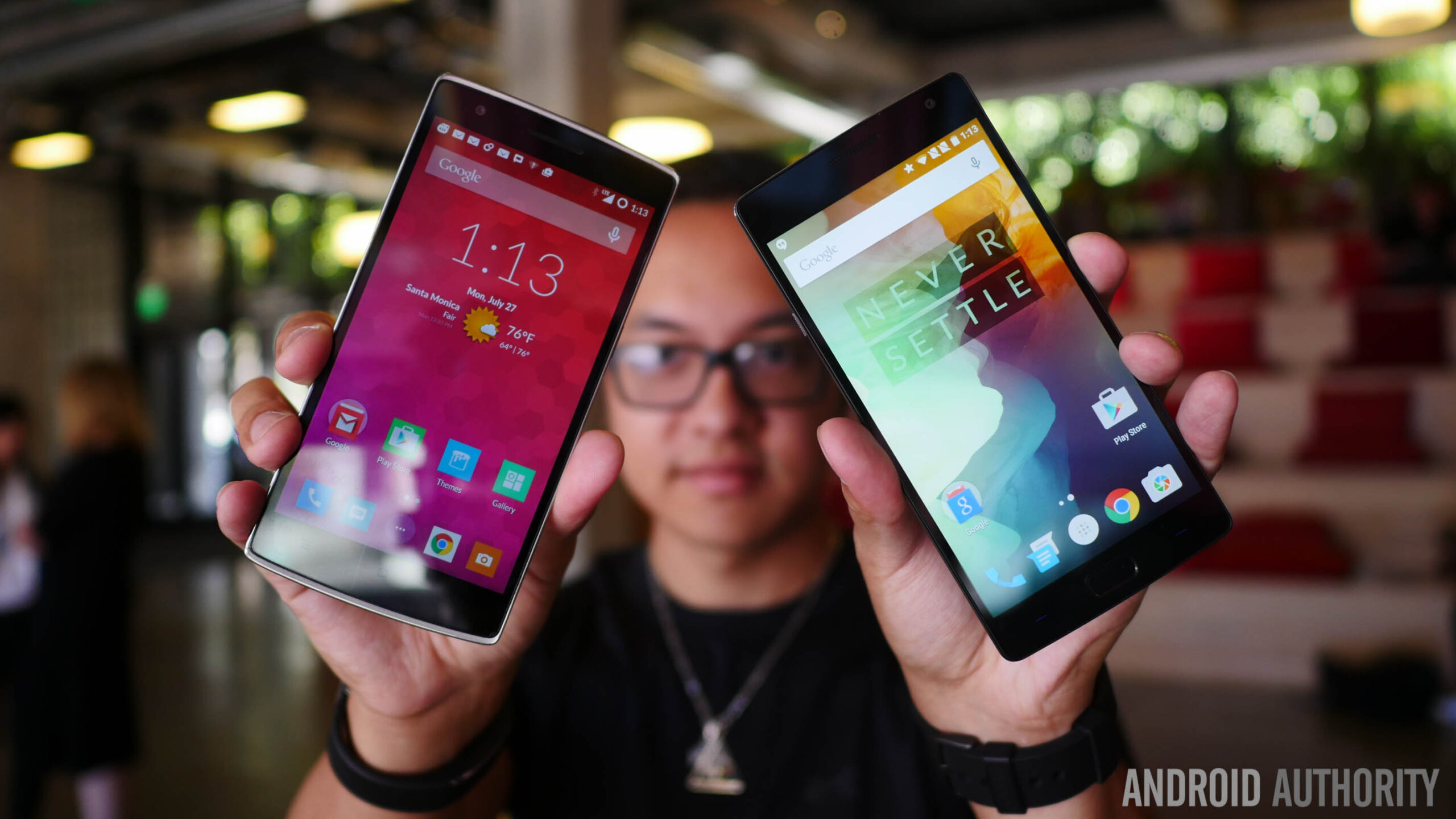
So far performance seems great, and we’re excited to test out the OnePlus 2 in our full review.
Now that the OnePlus One has been out for over a year, the smartphone’s specs are beginning to feel a tad outdated by today’s standards. With its Snapdragon 801 processor, Adreno 330 GPU and 3GB of RAM, the One still runs smoothly from day to day, though it’s not as zippy as some of the more recent flagships on the market.
Overall both ph0nes will provide great experiences, though we’d be remiss if we didn’t mention that the OP2 brings a few new extras to the table including the aforementioned fingerprint scanner, the new Alert Slider, and dual-SIM support for all versions of the OnePlus Two.
Camera
The OnePlus One is able to take some very decent photos, and that’s thanks in part to its powerful Sony Exmor sensor. The Japanese camera manufacturer is widely known for making some of the best smartphone cameras in the industry, and that was very true for the OnePlus One at the time of its launch. We’ll obviously have to wait and see how the OnePlus 2’s camera fares against the competition, but if history is any indicator, this new flagship probably won’t fail to deliver.
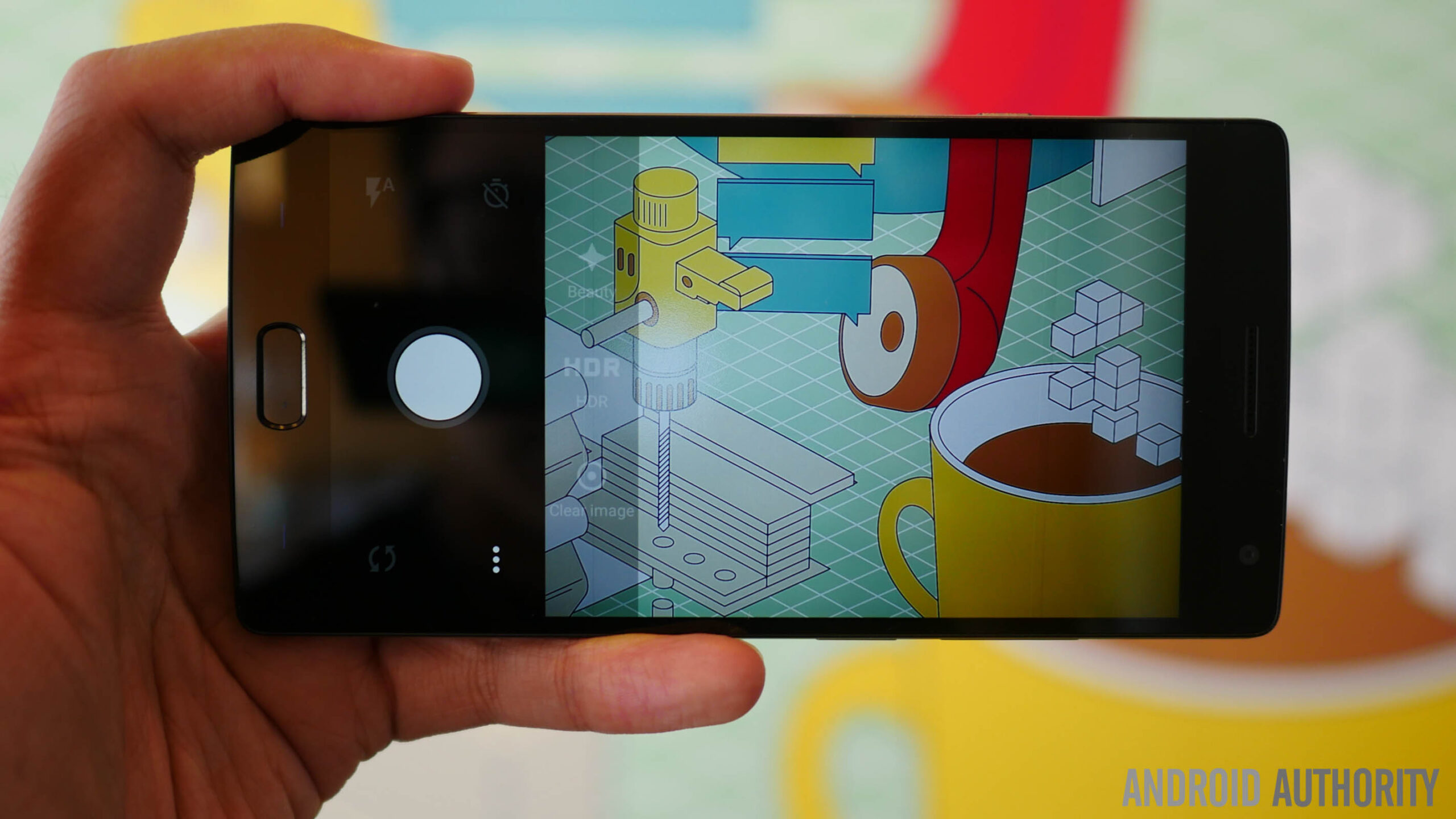
The OnePlus 2 and One both feature 13MP rear-facing cameras and 5MP front-facers, though the new handset has a few tricks up its sleeve. It now features laser autofocus technology and an f/2.0 aperture, which will make for quicker, better shots, even in low light situations. There’s also OIS this time, which is a nice bonus.
Software
Both the OnePlus One and OnePlus 2 are able to take advantage of OnePlus’ in-house built OxygenOS, so they are basically on par in terms of software. The main difference is that the OnePlus One originally launched with CyanogenMod, one of the most popular third-party Android ROMs. OnePlus parted ways with Cyanogen just some months ago, and so the phone maker moved on to its own OS. That said, OPO owners still have the option of running CM, while the OP2 will not offer the ROM out of the box.
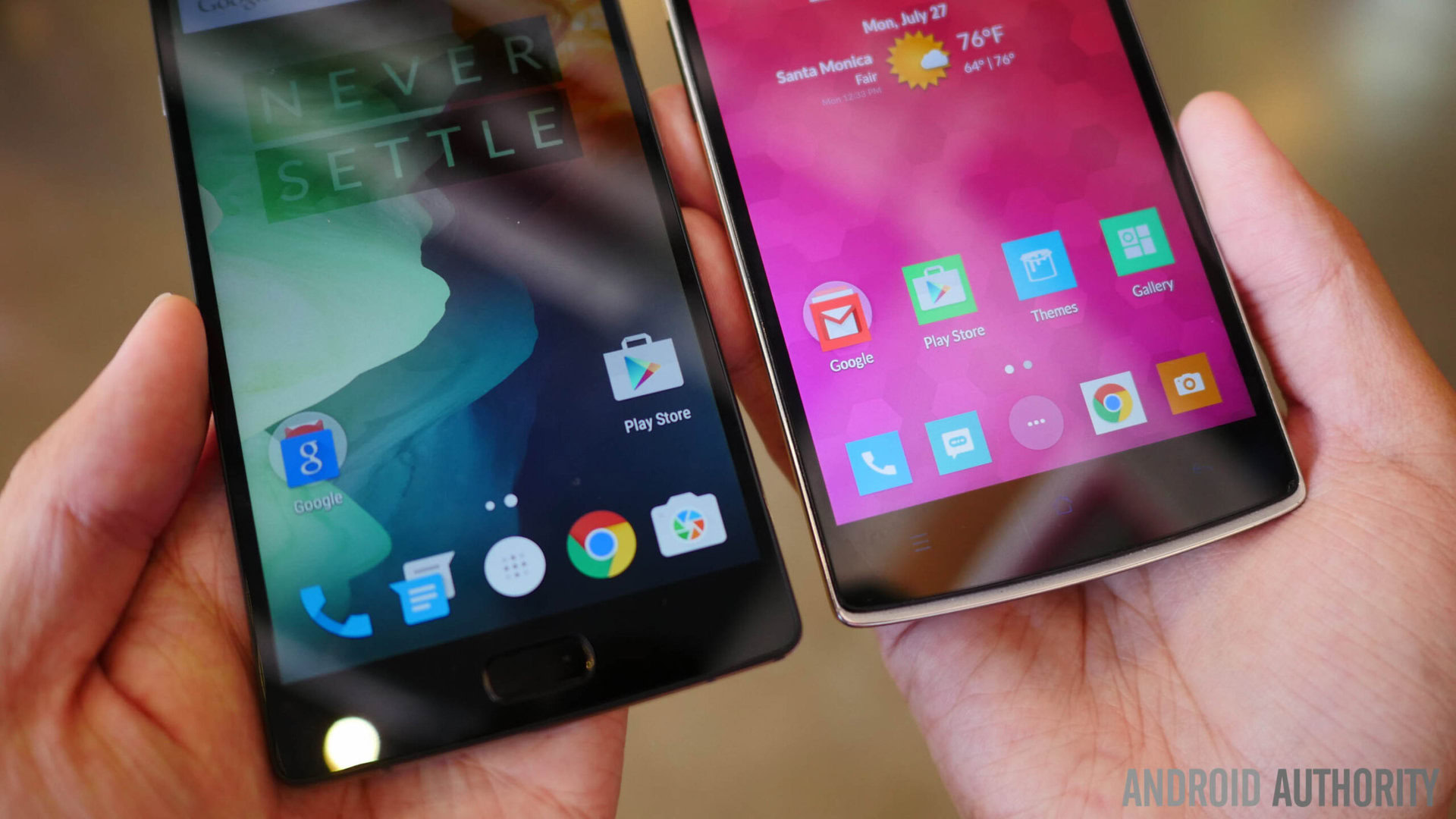
While many folks love Cyanogen, Oxygen OS is actually pretty solid as well. The OnePlus-made ROM is known for its vanilla-like Android experience. It’s simple and clean, but also takes advantage of nifty gestures, quick settings improvements and a few other tweaks. Some of the OnePlus-centric features here include the ability to use soft keys instead of the hardware keys, a new shelf widget that lets you quickly get to the apps and contacts you want, and a few other minor changes.
Specs
| OnePlus One | OnePlus 2 | |
|---|---|---|
Display | OnePlus One 5.5-inch LCD display with 1920 x 1080 resolution, 401ppi | OnePlus 2 5.5-inch LCD display with 1920 x 1080 resolution, 401ppi |
Processor | OnePlus One 2.5 GHz quad-core Qualcomm Snapdragon 801 processor | OnePlus 2 1.8GHz Snapdragon 810 processor |
RAM | OnePlus One 3GB RAM | OnePlus 2 3 or 4 GB (depending on storage option) |
Storage | OnePlus One 16 or 64GB storage | OnePlus 2 16 or 64GB storage |
Software | OnePlus One CyanogenMod OS or OxygenOS | OnePlus 2 OxygenOS based on Android 5.1 |
MicroSD | OnePlus One No | OnePlus 2 No |
Dual-SIM | OnePlus One No | OnePlus 2 Yes |
Wireless Charging | OnePlus One No | OnePlus 2 No |
Fingerprint Scanner | OnePlus One No | OnePlus 2 Yes |
Camera | OnePlus One 13 MP Sony Exymor f/2.0 rear-facing camera 5 MP front-facing camera | OnePlus 2 13MP rear-facing camera 5MP front-facing camera |
Battery | OnePlus One 3,100mAh | OnePlus 2 3,300mAh |
Dimensions | OnePlus One 152.9 x 75.9 x 8.9 mm 162 grams | OnePlus 2 151.8 x 74.9 x 9.85 mm 175 grams |
Gallery
Pricing and final thoughts
This is where things get interesting, because the OnePlus One, more than anything, is known for its amazingly affordable pricing. The company exploded mostly thanks to this, as they managed to cut competitors’ prices in half and still offer similar performance. It was a bomb drop on the industry. No one had released a high-end phone for $300 before!
We now expect the same out of the OnePlus 2. Sadly, the price did go up, but not by much. The OnePlus 2 is priced at just $389 for the 64GB model, while the variant with 3GB of RAM will cost only $329. Even though the price has gone up slightly, this is still one hell of a deal for everything you get. OnePlus went above and beyond our expectations once again.
Now, back to the main question – which phone is better? Obviously, the OnePlus 2. It’s newer, much more powerful and adopts technology that was not yet standardized when the OnePlus One reached the market (some of it still isn’t, really). Now you have to ask yourself whether you really need the latest and greatest. Some don’t, and the OnePlus One is still an amazing device that could keep you satisfied. Especially if you get it at a good discount.
In relative terms, I’d say the OnePlus 2 will also be more successful and important to the industry. It’s a forward-thinking product that focuses on making a difference by competing with specs, features, quality and innovation, whereas before it was mostly about the price relative to performance.
What do you folks say? Let us know your thoughts in the comments below!